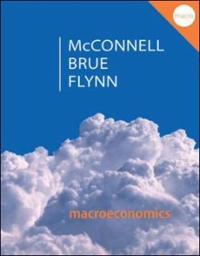1. Decide whether the following are true, false, or uncertain and thoroughly explain your reasoning (a) (Review) If AC > MC at the firm's chosen output level, then the firm is producing on the upward sloping part of its AC curve. (b) When an unregulated market creates positive externalities it tends to produce too little and when it creates negative externalities tends to produce too much. (c) Charging a toll on an uncongested highway increases total surplus because this creates revenue to pay for building and maintaining the highway. (d) Charging a toll on a congested bridge increases total surplus because it reduces the number of drivers and thereby reduces congestion. (e) If a public good cannot be paid for through user fees, then it should not be provided. (f) The costs of National Parks should be covered by charging admission fees, because we shouldn't have National Parks if the people who use them are not willing to pay enough to cover these costs. g) (Review) You have been offered an investment opportunity that would require you to put up $10.000. The investment would pay $500/year for each of the next 10 years. You would also get your initial $10,000 investment back at the end of 10 years, and you believe there is zero risk of default. The interest rate on 10-year treasury bills is 6%. It is a good idea to invest? 2. What is the name for each of the following classes of goods, and provide two examples for each. Explain why each example belongs to that class. a) Goods that are rival in consumption and excludable. (b) Goods that are non-rival in consumption and excludable. (c) Goods that are rival in consumption and non-excludable (d) Goods that are non-rival in consumption and non-excludable. 3. The production of plastic creates pollution, which, in sufficient quantities, can harm people's health. Assume that the plastic industry is perfectly competitive. We know that the industry will produce more output than is socially optimal, since firms do not bear the costs of pollution (that is, pollution is a negative externality). Without government intervention, the market output will be 50 million units at a price of $10, where $10 is the minimum AC of firms in the industry. This cost is the long-run







